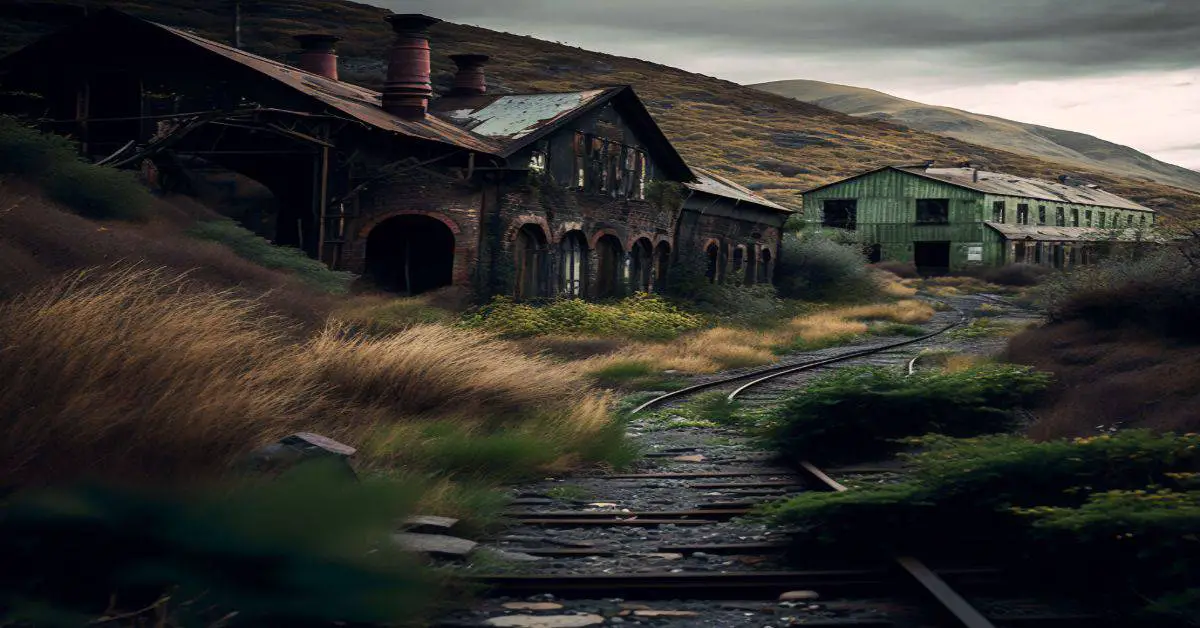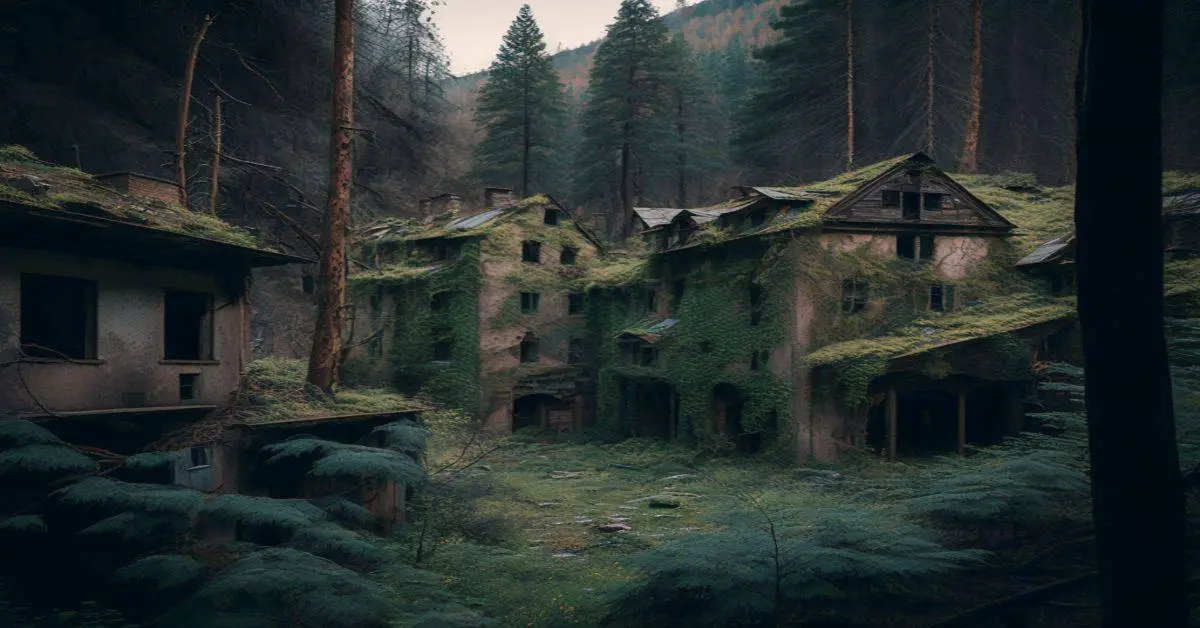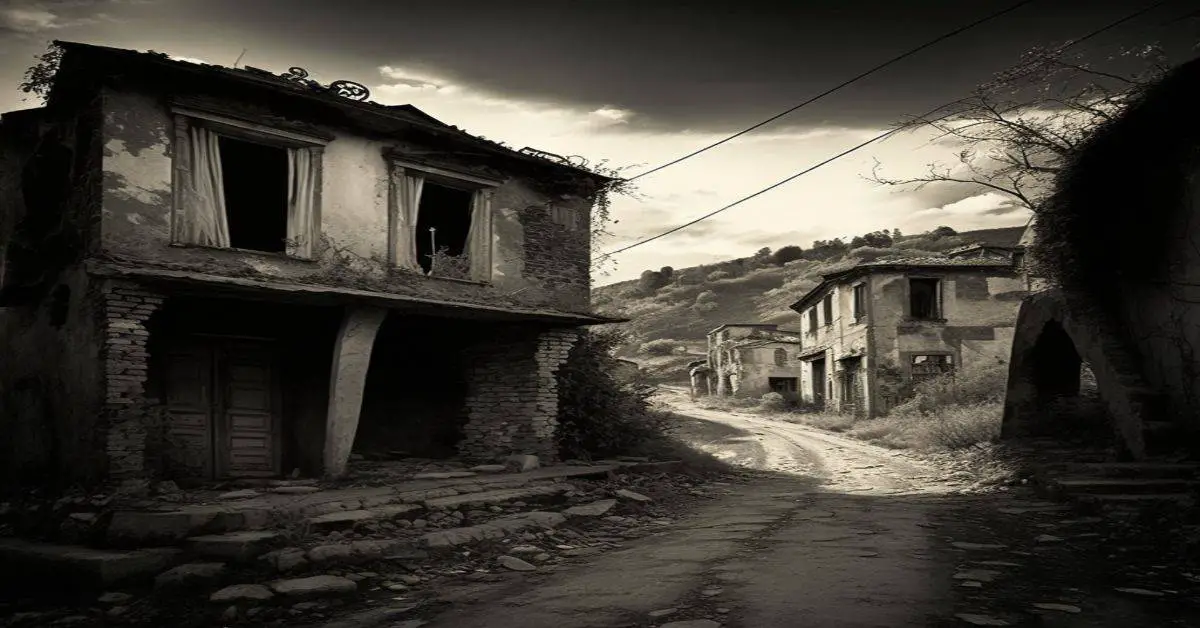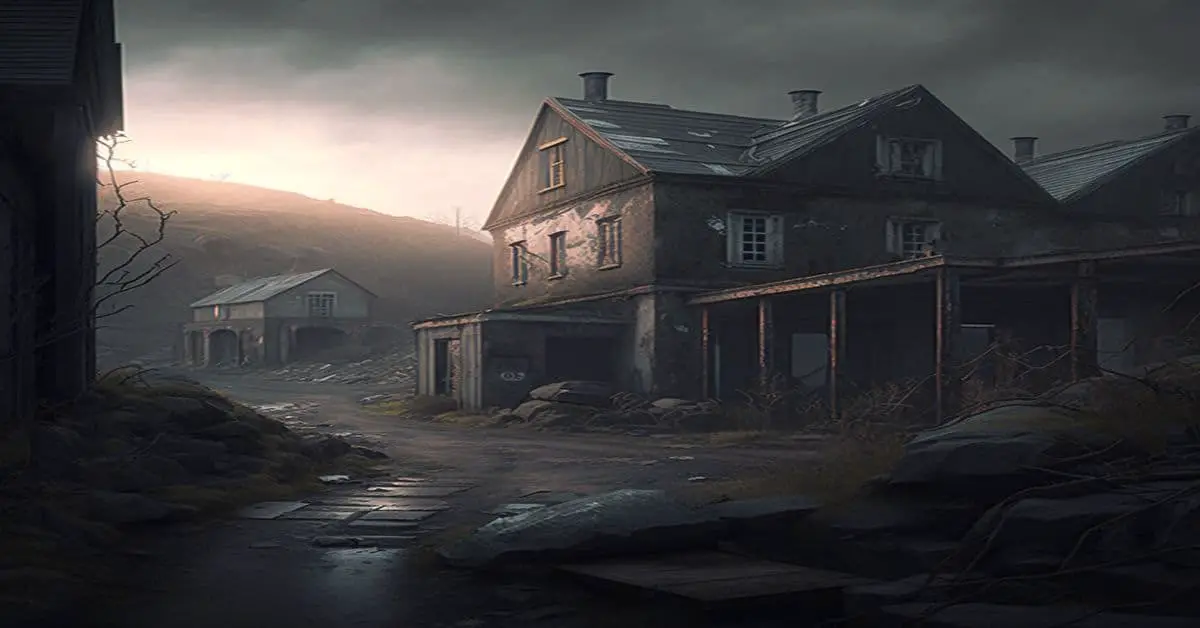Ghost towns are abandoned or semi-abandoned settlements that once thrived but have since been deserted, often due to economic shifts, natural disasters, or human-caused events. The term “ghost town” evokes a sense of mystery and intrigue, as these places seem frozen in time, leaving behind only the faint echoes of their once vibrant past.
In this article, we will explore why ghost towns are called ghost towns and explore the fascinating stories behind some of the world’s most famous examples.
The Definition of a Ghost Town
The term “ghost town” describes a deserted or abandoned settlement with visible remnants of buildings, infrastructure, or other structures. Historian T. Lindsey Baker states that a ghost town is “a town for which the reason for being no longer exists.”
This definition implies that a town must have lost its economic or social purpose to be considered a ghost town. While the exact criteria for classifying a town as a ghost town may vary, there are some common characteristics that most ghost towns share:
- A significant decrease in population
- Abandoned or deteriorating buildings and infrastructure
- A declining or non-existent local economy
Ghost towns can be found all over the world, from mining communities in the American West to ancient cities in the Middle East. They serve as reminders of the ever-changing nature of human settlements and the forces that can lead to their decline and eventual abandonment.
Causes of Ghost Town Formation
There are several reasons why a town might become a ghost town. Some of the most common causes include:
Economic Shifts
Many ghost towns were once thriving communities that experienced a sudden decline in economic activity. This could be due to the depletion of a natural resource, such as the exhaustion of a mine or the deforestation of a logging town, or the collapse of a major industry that supported the local economy.
When the economic activity that sustained a town disappears, so too does its population, leaving behind a ghost town.
Natural Disasters
Natural disasters, such as floods, earthquakes, or volcanic eruptions, can also lead to the formation of ghost towns. These events can cause widespread destruction and make a town uninhabitable, forcing residents to abandon their homes and seek shelter elsewhere.
In some cases, towns may be rebuilt nearby, leaving the original settlement to decay and become a ghost town.
Human-Caused Events
Human actions, such as wars, government policies, or environmental contamination, can also contribute to the creation of ghost towns. In some cases, entire towns may be forcibly evacuated due to threats to public safety, such as radioactive contamination from a nuclear disaster or dam construction that will flood the area.
Other towns may be abandoned due to lawlessness, political unrest, or other human-caused events, making it difficult or impossible for residents to continue living there.
Ghost Towns Around the World
Ghost towns can be found in every corner of the globe, each with its own unique history and story to tell. Some of the most famous ghost towns include:
United States
Ghost towns are particularly prevalent in the western United States, where the boom-and-bust cycle of mining towns and the rapid expansion of the railroad led to the creation of many short-lived settlements. Some notable examples include:
- Bodie, California: A gold-mining town that was abandoned when the mines were depleted, Bodie is now a well-preserved state park and popular tourist destination.
- Virginia City, Montana: Once a thriving gold rush town, Virginia City is now a National Historic Landmark and a popular tourist attraction.
- Centralia, Pennsylvania: This town was abandoned due to an underground coal mine fire that has been burning since 1962, making it uninhabitable.
Canada
Canada also has its share of ghost towns, many of which were once mining or logging communities that declined when the resources they depended on were exhausted. Some notable Canadian ghost towns include:
- Barkerville, British Columbia: A restored gold rush town that now serves as a tourist attraction and heritage site.
- Val-Jalbert, Quebec: A former pulp mill town that was abandoned when the mill closed down, Val-Jalbert is now a popular tourist destination.
Europe
Ghost towns can also be found throughout Europe, with many abandoned due to economic shifts, natural disasters, or human-caused events. Some examples include:
- Oradour-sur-Glane, France: A destroyed village and its inhabitants massacred by German troops during World War II, Oradour-sur-Glane has been left as a memorial to the victims.
- Craco, Italy: This medieval village was abandoned due to landslides and has since become a popular filming location for movies.
Asia and the Middle East
In Asia and the Middle East, ghost towns are often the result of wars, political upheaval, or natural disasters. Some well-known examples include:
- Pripyat, Ukraine: A city that was evacuated following the Chernobyl nuclear disaster in 1986, Pripyat remains abandoned and off-limits to the public due to high radiation levels.
- Aghdam, Azerbaijan: This city was destroyed during the First Nagorno-Karabakh War and has been left in ruins ever since.
The Revival of Ghost Towns
There has been growing interest in preserving and restoring ghost towns as tourist attractions, heritage sites, and even as new communities in recent years. Some ghost towns, such as Barkerville in British Columbia or Bodie in California, have been transformed into popular tourist destinations, allowing visitors to step back in time and experience these historic places firsthand.
Other ghost towns, such as the former mining town of Black Hawk, Colorado, have been revitalized and repurposed as resort communities, featuring hotels, restaurants, and casinos housed in restored historic buildings.
Whether they are preserved as relics of the past or given new life through adaptive reuse, ghost towns serve as a testament to the ever-changing nature of human settlements and the many forces that can shape their rise and fall.
The Appeal of Ghost Towns
There is a certain allure to ghost towns that has captivated the imagination of many people throughout history. These abandoned settlements, with their decaying buildings and silent streets, provide a glimpse into a bygone era and the lives of the people who once called them home. They also serve as a reminder of the impermanence of human endeavors and the ever-present possibility of change.
Ghost towns are often the subject of legends, folklore, and ghost stories, adding to their mystique and appeal. They also provide unique opportunities for exploration, photography, and even paranormal investigation.
Whether you are drawn to ghost towns for their historical significance, their eerie atmosphere, or the stories they have to tell, these fascinating places offer a unique window into the past and a haunting reminder of the passage of time.
Ghost Town Tourism
As interest in ghost towns has grown, so too has the popularity of ghost town tourism. Many ghost towns have been transformed into tourist attractions, with visitors flocking to these sites to learn about their history, explore the remaining structures, and immerse themselves in the eerie atmosphere of these abandoned places.
Ghost town tourism can take many forms, from guided tours of well-preserved historical sites like Bodie, California, and Barkerville, British Columbia, to off-the-beaten-path adventures in more remote and lesser-known locations. Some ghost towns even offer overnight accommodations, allowing visitors to fully immerse themselves in the experience of staying in a deserted town.
Whether you’re a history buff, an amateur photographer, or simply someone who enjoys exploring the world’s hidden corners, ghost town tourism offers a unique and unforgettable experience that will leave a lasting impression.
The Future of Ghost Towns
As more and more people become interested in the preservation and restoration of ghost towns, these once-forgotten places are being given a new lease on life. In some cases, this means transforming them into tourist attractions or adaptive reuse projects, while in others, it may involve efforts to repopulate and revitalize these communities.
Regardless of their ultimate fate, ghost towns will continue to serve as a reminder of the ever-changing nature of human settlements and the forces that can lead to their rise and fall. They also provide valuable opportunities for education, research, and exploration, allowing us to learn from the past and better understand the complex interplay of factors that shape the world we live in today.
Conclusion
So, why is a ghost town called a ghost town? The term “ghost town” refers to the eerie atmosphere and sense of abandonment that pervades these deserted settlements, where the only remaining “residents” are the ghosts of the past.
These towns have been left behind for various reasons, including economic shifts, natural disasters, and human-caused events, leaving behind a haunting reminder of the impermanence of human endeavors and the ever-present possibility of change. As interest in ghost towns continues to grow, so too does the opportunity to preserve, restore, and learn from these fascinating and haunting places.



